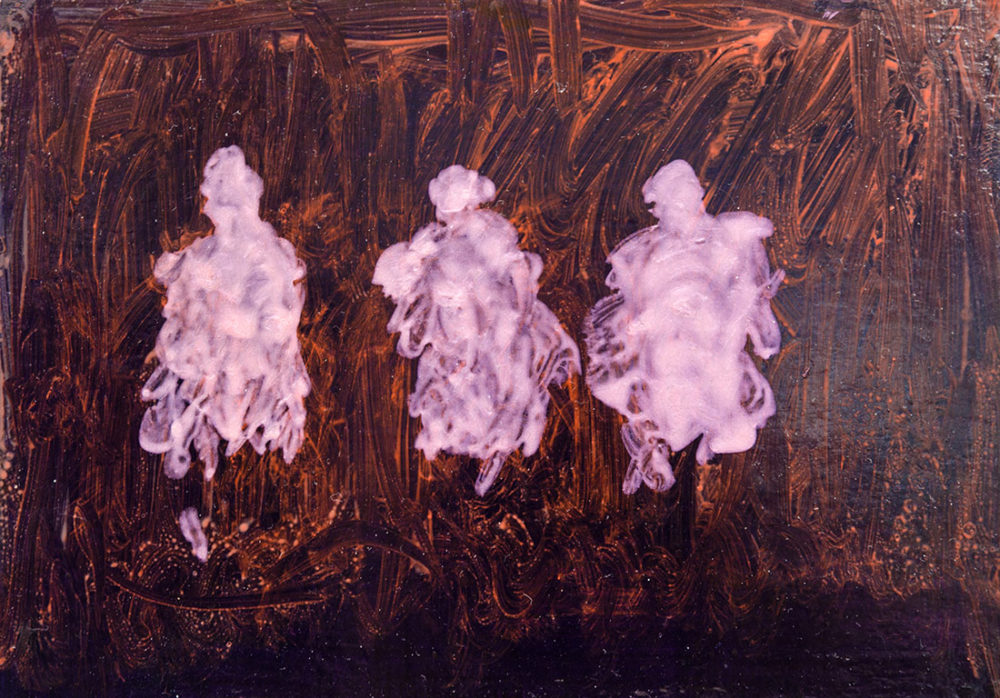About my art
To understand the space as a glittering particle.
Glitter in the fire,
Glitter in the air,
Glitter in the water and
down in the soil.
Glitter in nature and in the soul.
Fish skin in the water.
F or me, painting signifies the universal translation of that which is. I begin with colors in order to arrive through colors at colorfulness. The process from colors to colorfulness emerges on a predefined, limited space on which infinite limitlessness is to be realized. To me, color is the only reality in painting and has therefore nothing to do with figurative and abstract art. Painting and colorfulness to me are meditation, magic or related to shamanism.
About the Reality of a Painting
I am asking myself the question as to what painting really is. On the material level a picture or painting is officially categorized as special waste. This is due to the fact that color pigments are composed of several components: such as lead, cobalt, chromium, cadmium, arsenic etc.
As an object, this is the only reality for a picture.
The appearance of color can be deceptive. In my eyes, a blank picture surface is a two-dimensional space. Instead of ability and skill that can lead to illusions on the canvas, I let the color unfold into colorfulness, in order to prevent the ever emerging illusion and self-deception. For this purpose, I define form and color through more color and nuances.
For this process, I use four different methods:
a.) superimposed colors
b.) adjacent colors
c.) color nuances
d.) color blends
About Painting
The glitter, the human being, the animal, the fish, the water, nature and the experience of fishing with art-lures, as well as classical instrumental music and opera are all forms and topics that constitute my material reality, as does painting by means of color and nuances, which are being translated onto the surface of a canvas. We are not talking about mere depiction, illustration or to use it as an idea but rather about pictorial design.
Meaning is given to these forms, colors and colorfulness within the context of the painting. Form and color swirl mutually around, attract or repel each other. It is my ambition to perceive the color of the emerging picture more consciously, to understand and to experience it.
Depending on what the painting needs and what the situation requires, I apply the color in a flowing, dancing, conflicting, struggling and sometimes resigning and winning manner. It is a mutual exchange, an interrelationship between ruling and being ruled, accepting and refusing, allowing and rejecting. It is a perpetual process that consists of ever repeating observation, perception, destruction and forming.
I react to what is created in front of my eyes until the picture is whole. It is important to know when this is the case. As soon as the condition of the painting allows for it, I let go and accept it the way it is.
About Me
In my childhood, everything around me sparkeled and glittered during the day, even the horse dung on the street. At night, the vivid glittering of the dark room was eerie and sheer horror. Over time, the glittering faded. As a high school student in 1970, I started to write with ink and quill. These objects led me to drawing. This pulled the feeling of freedom out of me.
As a result my interest in art was awakened. During my art studies in 1980, I began to sense the glittering once more. It took 22 years until I had consciously rediscovered the glittering.
The Foundation: the Primer
As an art student, I initially asked myself: What is primer, anyway?
How shall I paint if I don’t understand and master the priming process? How does the color change when applied to different substrata? How does the color behave on white or colored surfaces?
Layer by layer I dissected different fish skins, using a scalpel under a magnifying glass in order to comprehend the function, composition and structure. Moreover, I wanted to figure out in detail the reason for the colorful glittering.
Form or Color?
What is more important, form or colorfulness? Figurative or abstract painting? These questions run through the entire history. In Italy during the time of the Renaissance major disputes were about what was more important, form or color. The city of Florence preferred form. The city of Venice preferred color. This is not a question that concerns me, because in my paintings form dissolves in colorfulness.
About Drawing
I call drawing the sensor of the landscape of the soul. A line drawn with the pencil is comparable to a seismograph. Similar to tracks found in nature which are caused by creatures and natural elements, so can natural beingness, the arbitrary and involuntary effects of forces and sensitivities etc. also be read. Thin as well as broad brushstrokes leave tracks, forces and areas of tension, just like in calligraphy.
Criteria Under Which Experts Analyze Paintings
During the time of my art studies, the Ministry of Culture wanted to implement grades at the art academy. There was a debate as to how art can be graded.
The following categories were established:
1) Material science
2) Perspective
3) Anatomy
4) Composition
5) Technique
6) Art history
These six attributes have little to do with painting. The most important components of art could not be ascertained. Therefore, the need for grading was eliminated.






